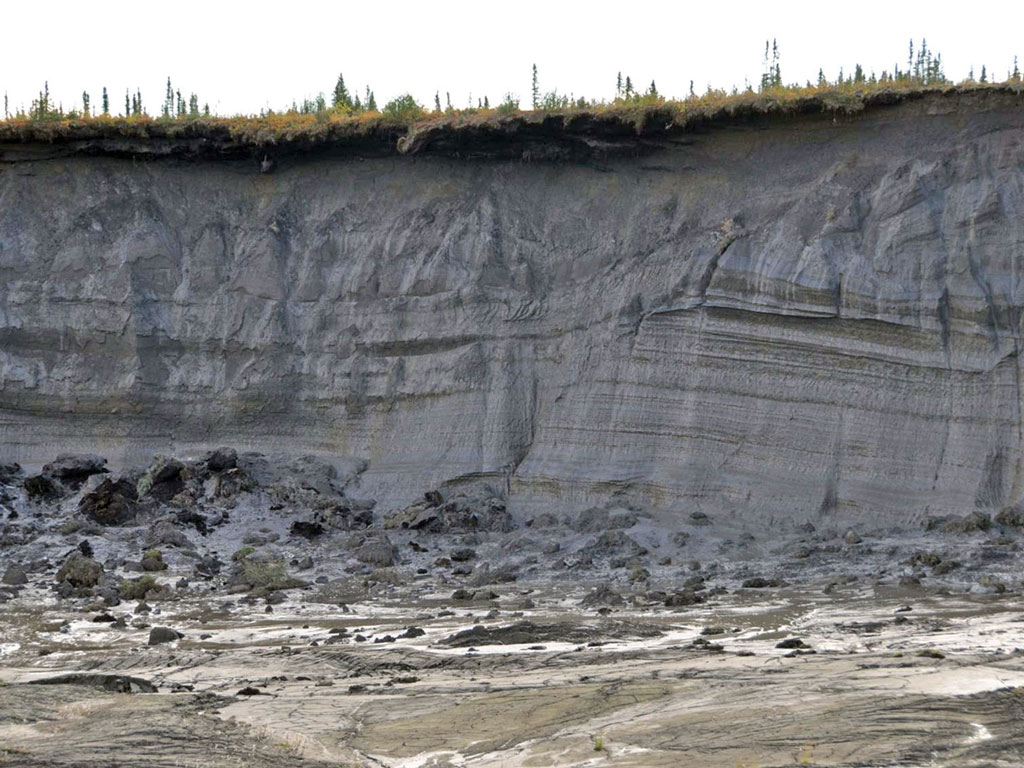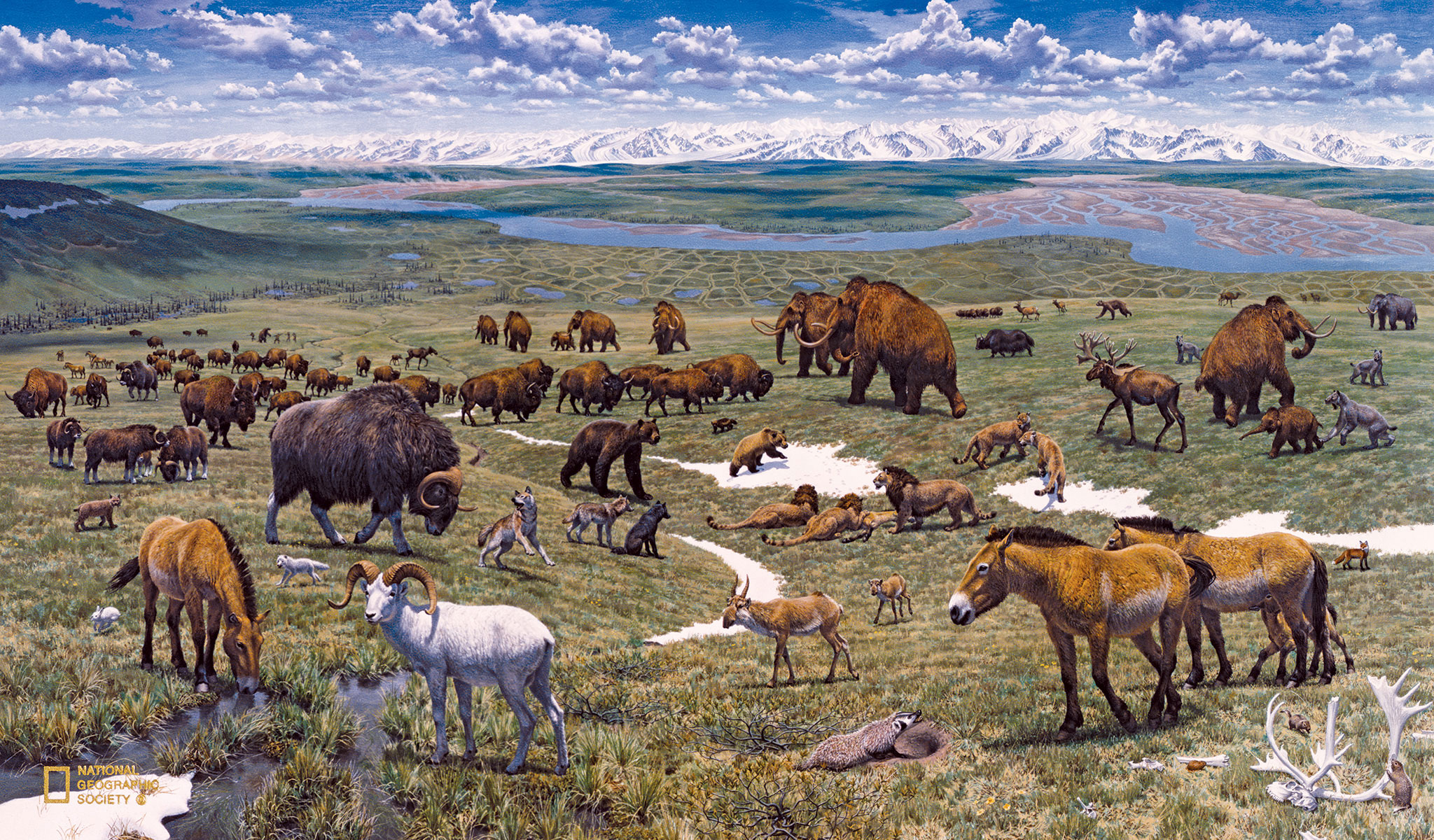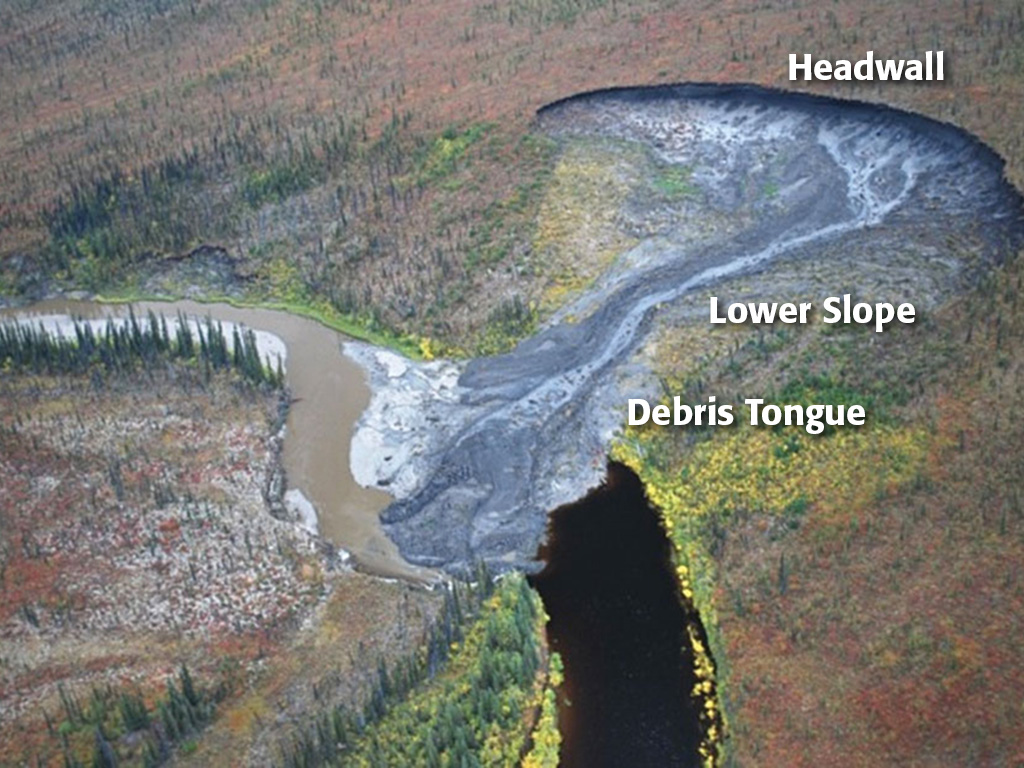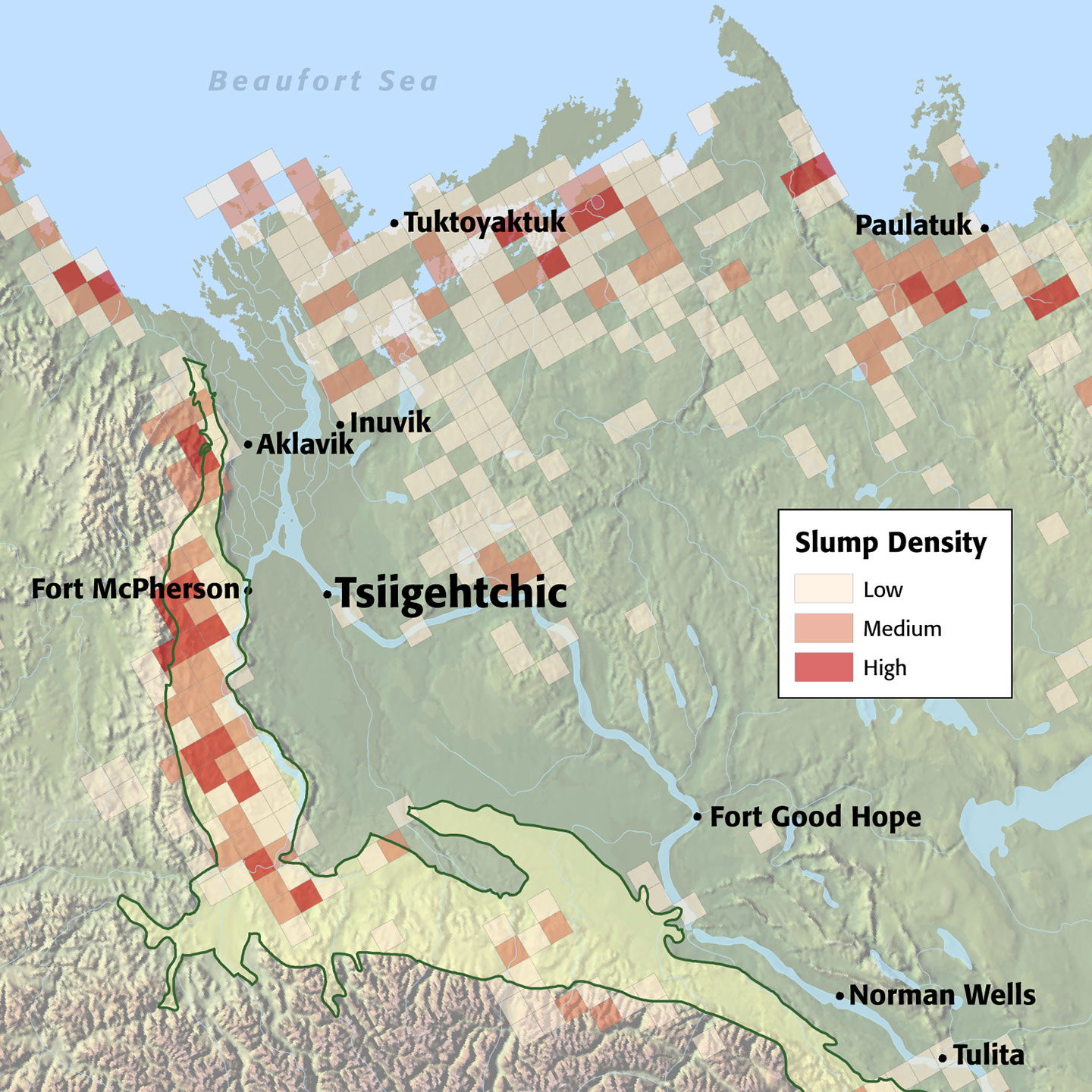Climate change then and now
The world that the Tsiigehtchic steppe bison lived in 13,000 years ago was one of tremendous change as the Earth’s climate warmed. This brought to a close a glacial period that had lasted for more than 85,000 years.
Today, the Earth’s climate is warming again. Permafrost and ground ice, some of which have survived from the last glacial period, are thawing leading to catastrophic erosion of northern environments.
The steppe bison died off during the first warming and was revealed 13,650 years later during the current period of rapid global warming. What can the steppe bison teach about the worlds it existed in, as a living animal and as a fossil, over 13,000 years apart?
Almost all of Canada was covered by thick sheets of ice 20,000 years ago. These were the continental glaciers, with thick ice masses similar to those we see today in Greenland and Antarctica.
The Laurentide Ice Sheet covered the Canadian north and butted up against the eastern slopes of the Richardson and Mackenzie Mountains in the Northwest Territories.
Fossils of steppe bison and other ice age mammals are rare from the Northwest Territories because most of this region was covered by glaciers during the ice age.
Around 15,000 years ago, global climate began to warm and glaciers melted. As the glaciers retreated eastward across northern Canada, new habitats opened up for ice age mammals. Woolly mammoths, horses and steppe bison migrated from Yukon to the Mackenzie River valley and into the Northwest Territories.
Thanks to Shane Van Loon’s discovery in a thaw slump, we now have this incredible steppe bison from Tsiigehtchic.
Beringia
During the last glacial period, enough of the Earth’s water became frozen in the great ice sheets covering North America and Eurasia to cause a significant drop in sea levels. This exposed the sea floors of the continental shelf of eastern Asia and western North America, linking the continents with a massive land bridge, called Beringia. About 15,000 years ago, water from melting ice flooded the seas and created the Bering Strait. The coastlines assumed their present shape about 6,000 years ago.
The ice-free landscape of Beringia was a refuge for tundra plants and animals that could survive its windswept Arctic desert conditions. The Tsiigehtchic steppe bison lived at the very eastern edge of Beringia. This indicates that even near the edge of the ice sheets, the local ecology was rich enough to support herbivores such as bison. Humans also lived in Beringia and archaeological sites in Siberia, Alaska, and the Yukon preserve evidence of their hunting and other activities.
Mammoth Steppe
Steppe bison lived in an ecosystem that no longer exists in the north today. Instead of the boreal forest or tundra, ice age Beringia was a vast grassland, or steppe. Woolly mammoths, camels, horses, and bison thrived in this landscape. Their remains were often well preserved in permafrost soils, leading scientists to call Beringia ‘an ice age genetic museum.’
The relationship between steppe vegetation and large ice age mammals has lead scientists to call this environment the Mammoth Steppe. The climates of Beringia were very dry and windy, leading to dusty conditions in summer, with a mix of exposed ground and snow drifts in winter. There were few trees or lakes, but in summer the grassland vegetation was diverse, and included shrubs and a rainbow of coloured wild tundra flowers. The three most common large animals were bison, horses, and mammoths, all grazers adapted to eating grass.
Extinction
The warming temperatures that marked the end of the ice age led to worldwide ecosystem change and the extinction of many animals of the Mammoth Steppe.
Some have suggested that 70% of all animals weighing more than 40 kg became extinct.
In North America, many species became extinct, including all species of horse, camel, and sloth. Woolly mammoths, mastodons, American lions and giant beavers also disappeared. However, some species like the bison and beaver, survived in North America in smaller forms.
When climates warmed at the end of the ice age, the ground became wetter and the Mammoth Steppe was replaced by the shrub tundra and forests we know today. The warmer environment became much more hospitable to animals that are common now, like caribou.
With these changes and extinctions in the north came new opportunities for other animals such as elk and moose who first crossed the Bering Land Bridge into North America around this time. Herds of caribou and muskoxen followed the retreat of the glacier ice across the North American Arctic and into Greenland.

The end of the ice age brought many changes including the extinction of most large mammals. However some, like the bison, survived by evolving to meet changing conditions. Changing environments created new opportunities for other species, like moose and humans, leading to their migration into North America.
What is a thaw slump?
Active thaw slumps contain a headwall of ice-rich permafrost, an area of lower slope where thawed materials accumulate, and a debris tongue that develops as sediments flow downslope. Thaw slumps grow upslope when icy permafrost exposed in the headwall of the slump thaws in summer.

Headwall of a thaw slump in the Peel Plateau, NWT.
What is a thaw slump?
Large slumps are serious hazards that can impact roads, traditional travel routes and land uses. They can pose a hazard to wildlife which can become trapped in the mudflows downslope of the slump headwall. Over the past few decades some of the largest slumps in the Peel Plateau have grown to exceed 30 hectares (37 Canadian football fields) in area. A large thaw slump can displace more than one million cubic metres (600,000 pickup truck loads) of sediment downslope into stream valleys, lakes or coastal areas.
A warmer and wetter climate is causing larger, longer-lived slumps to develop in the NWT. The growth of these disturbances will accelerate with continued climate warming.




